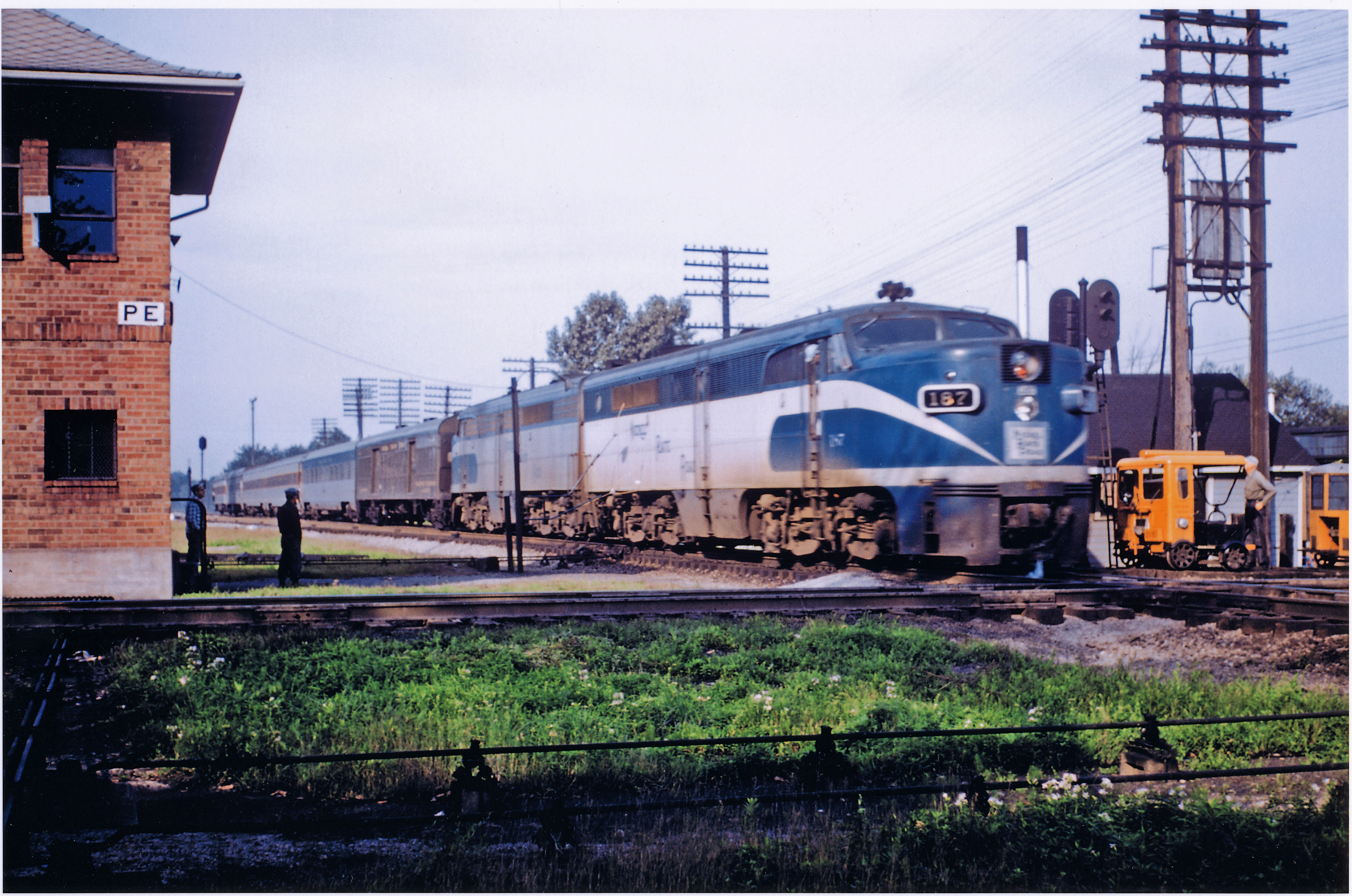And would one be found in a yard? And would it be characteristic of all eras?
A speeder shed kept the speeder out of the weather and provided a building for the section gangs tools.
While working on the PRR I seen a section gang working on yard switches and they had a speeder with a trailer. I’m not sure if there was a shed in one of the yards that made up the Cleveland Ave yard complex.
I’m not sure when the speeders disappeard I do know when I went to work on the Chessie(C&O) in '78 they had been replaced by hy-railers.
Ok, Brakie, your reponse begs another question, what is a hyrailer?
Speeder shed = Section house.
Divisions were broken down into sections. Each section had a section gang. They kept their rolling equipment in the section house. First handcars, then motorized section cars. The Fairmont Track car or motor car gained popularity in the 1930s and later. Handcars and velocipedes preceeded the motor car, knicknamed a “speeder” since they could travel much faster than a hand car.
Some of the models of motor cars were small enough that one man could extend a pair of handles and lift the car off the rails and allow regular train traffic to pass. Smaller cars were primarily for inspection use. Larger cars were called gang cars and they could carry six or eight men plus a trailer or two of tools and material.
They were frequently found at division points, then convenient junctions, depots or sidings in between. Division points in the '50s were typically 100 miles or so. There might be five or six maintenance sections in between. Some larger section houses I’ve seen could keep six or eight cars in them. They were closer to the main tracks rather than deeper into yards.
Here is a pair of section cars to the right, off the main, as #6 rolls by.
I used to have a Fairmont model MT-14 that I would run around on a short-line or on NARCOA trips:
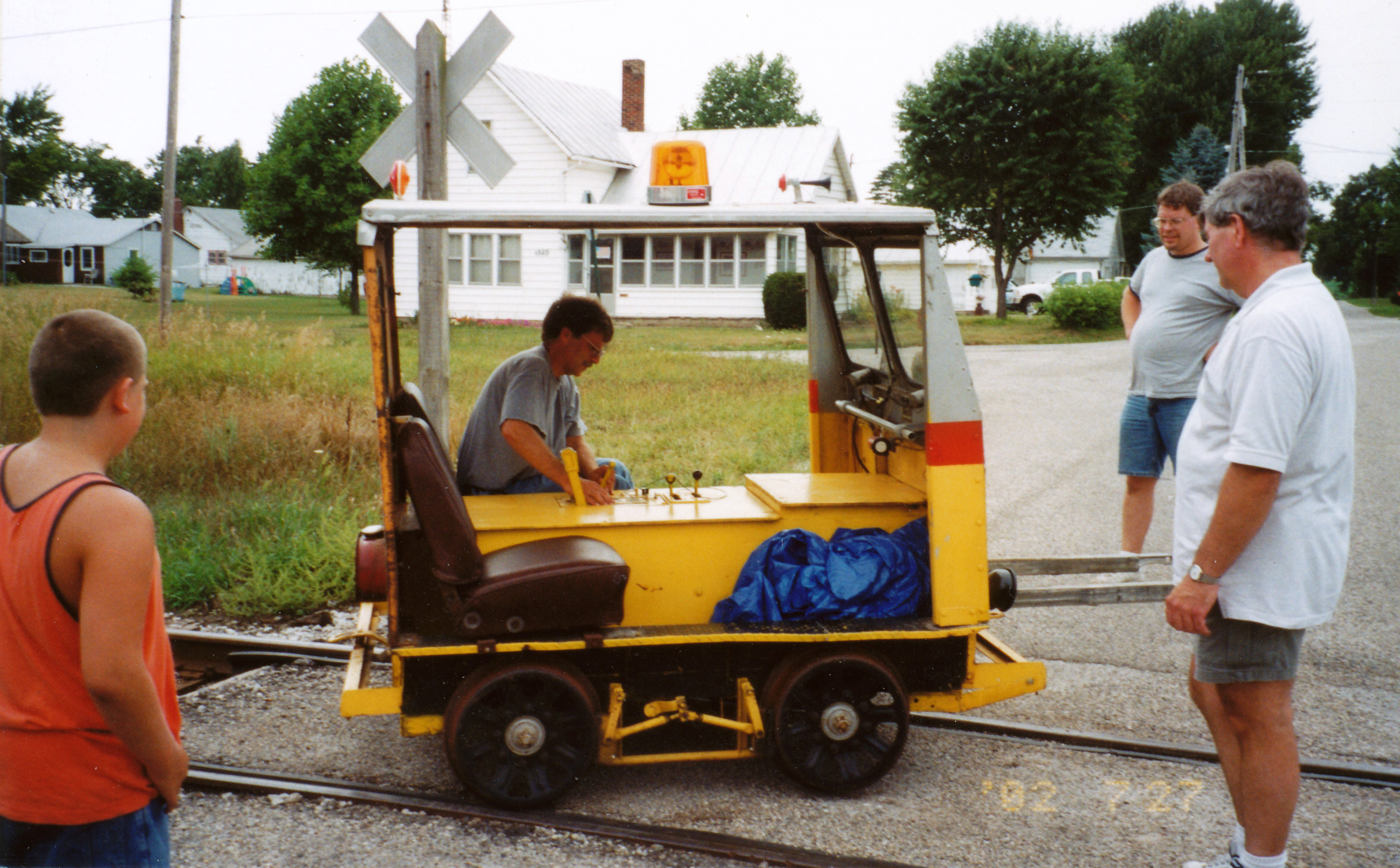 Fairmont_0005 (2016_08_17 08_08_12 UTC) by Edmund, on Flickr
Fairmont_0005 (2016_08_17 08_08_12 UTC) by Edmund, on Flickr
You can see the aluminum handles extended here as we place it on the track.
AHA, so those BNSF pickup trucks I’ve seen w/both tires and rail wheels are hi-railers. Ok, so it sounds like a speeder/shed could be located in a yard circa 1950’s.
Yep. Hi-Railers are real versatile vehicles for the railroads. Crews can cover greater areas and get to work areas much faster than by rail, especially these days with so much secondary trackage removed and traffic density increased.
Some large cranes are hi-Rail capable, too.
Walthers, Tichy and a few others make decent handcar/motorcar sheds:
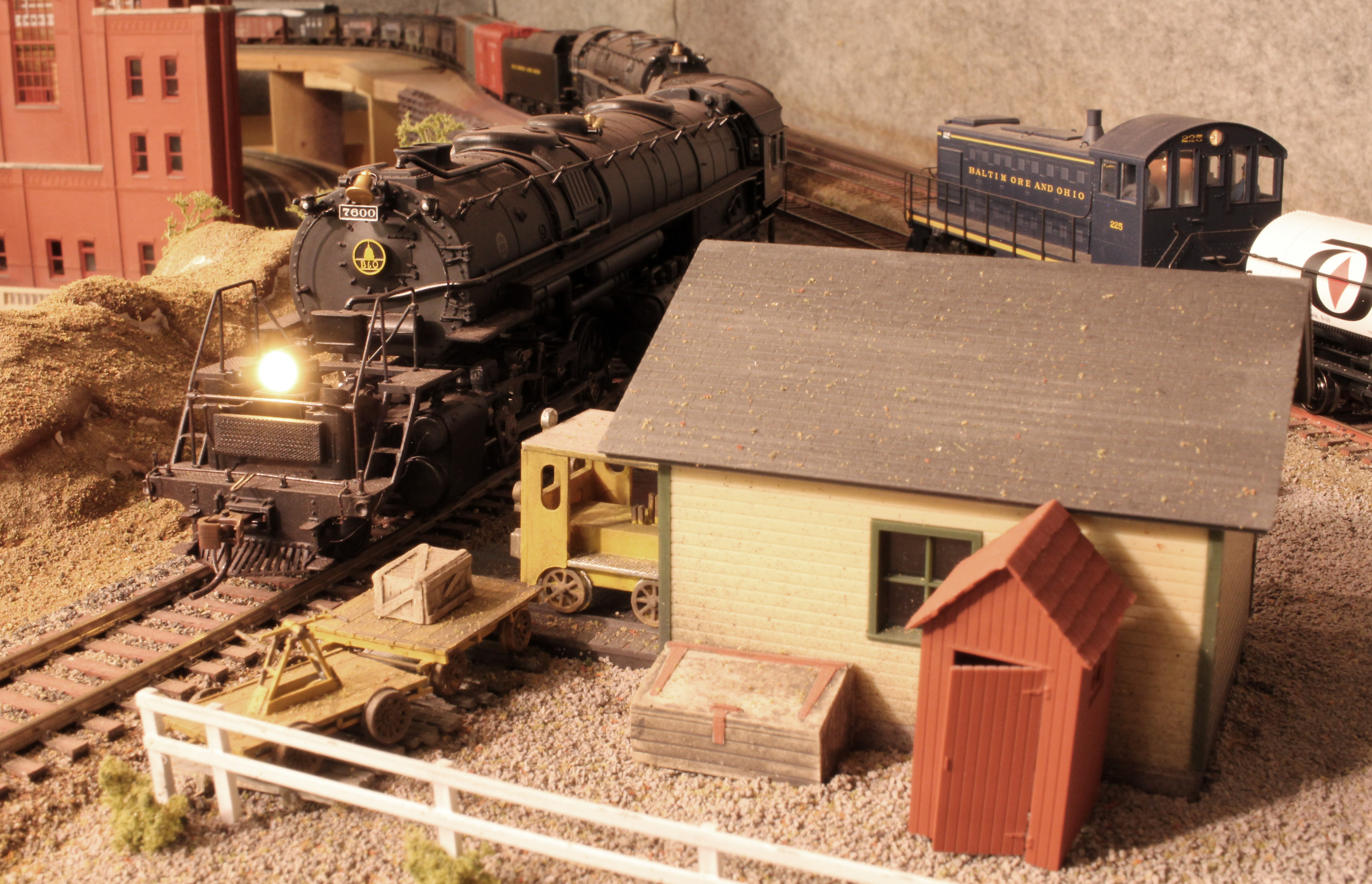 IMG_2578_fix by Edmund, on Flickr
IMG_2578_fix by Edmund, on Flickr
Cheers, Ed
A speeder might be kept in a section house with other tools and supplies, but a ‘section house’ and a ‘speeder shed’ aren’t the same thing. A speeder shed is basically like a small garage for a speeder to be kept in. A section house was more like a house; in remote areas, a section gang could basically live (eat, sleep) at the section house. In steam days, a section crew generally maintained about 10 miles of track, which back then might not be near a town or accessible any other way than by rail.
I have several drawings for a “Section Tool House” and a “Section Dwelling House”.
No mention of a Speeder Shed.
 Section House_Tool by Edmund, on Flickr
Section House_Tool by Edmund, on Flickr
 Section House_tooltext by Edmund, on Flickr
Section House_tooltext by Edmund, on Flickr
 Section House_dwg by Edmund, on Flickr
Section House_dwg by Edmund, on Flickr
And the Dwelling:
 Section House_Dwell by Edmund, on Flickr
Section House_Dwell by Edmund, on Flickr
 Section House_Dwell-1 by Edmund, on Flickr
Section House_Dwell-1 by Edmund, on Flickr
I guess it depends on how much room the OP has for his track workers?
Cheers, Ed
A “hi-rail” or “hy-rail” is a car/pickup/truck that has retractable railroad wheels attached to it, front and rear, and has the truck vehicle wheels on custom hubs (at leas the rear wheels) that put the wheels on the rails. The rubber drive tires ride on the rails and drive the vehicle forward. They gradually replaced motor cars over the 1980’s.
On smaller vehicles the hirail wheels were raised and lowered with a hand operated lever (a handle that fit in the mechanism), on modern larger vehicles it could be hydraulically or electircally deployed.
Now there are all types of hirail vehicles from inspection pickups to rail detectors to cranes to trucks large enough that they can move a couple rail cars.
In addition to section cars each section also had little trailers to pull tools and rails to the work site. Section cars or speeders had handles that slid out of the ends to make it easy for the gang to pick up the car and lift it on or off the rails.
Signal maintainers had a smaller vehicle, a "rail rod’ that was little more than a frame, a seat and a small gas engine, small enough that one man could pick up up.
Back in the day, the sections would work under traffic. They would have a line up that told them when trains were due and they only removed a tie or two at a time, so they would work and just get out of the way when a train showed up.
I have several speeder sheds on my layout…
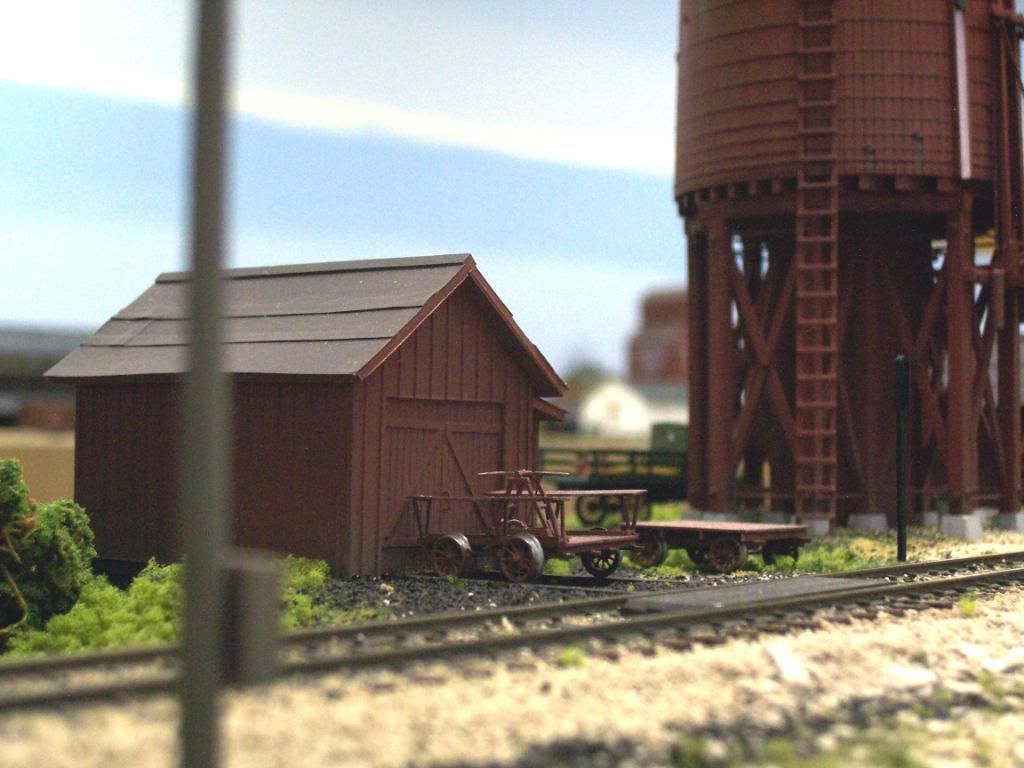
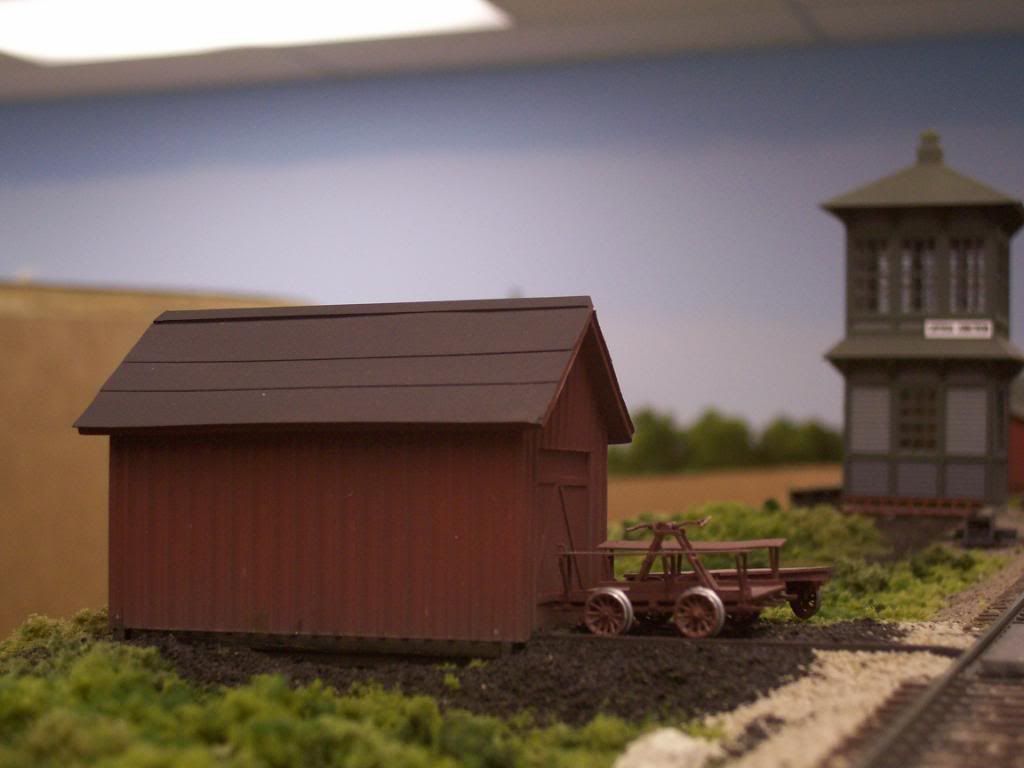
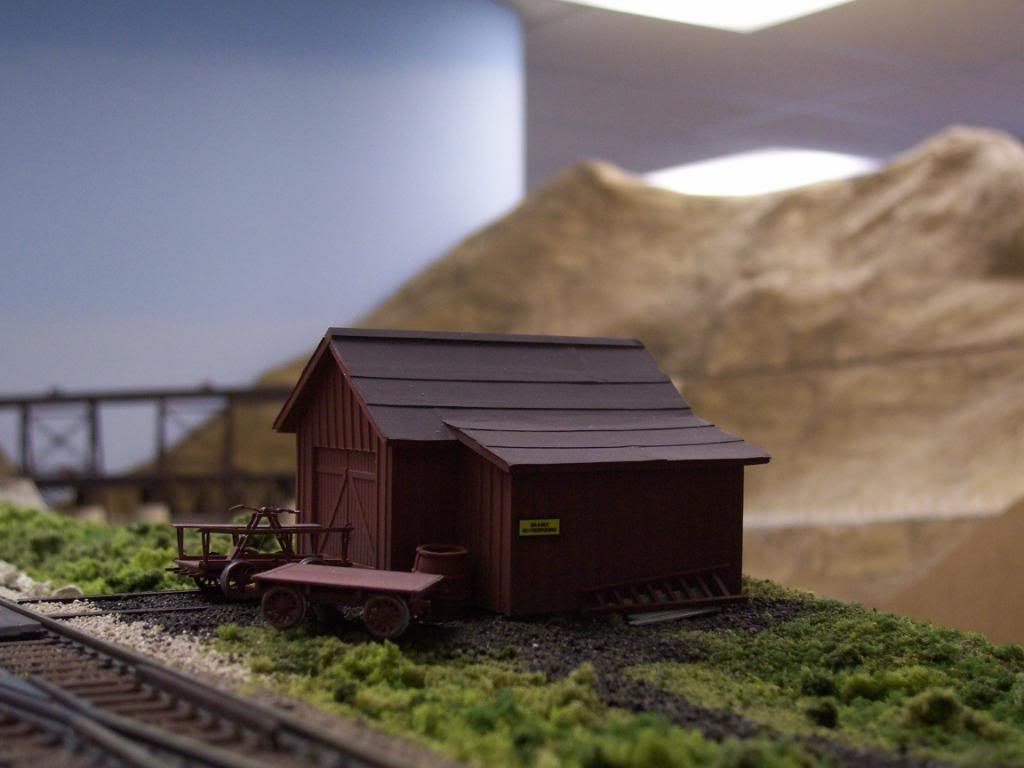
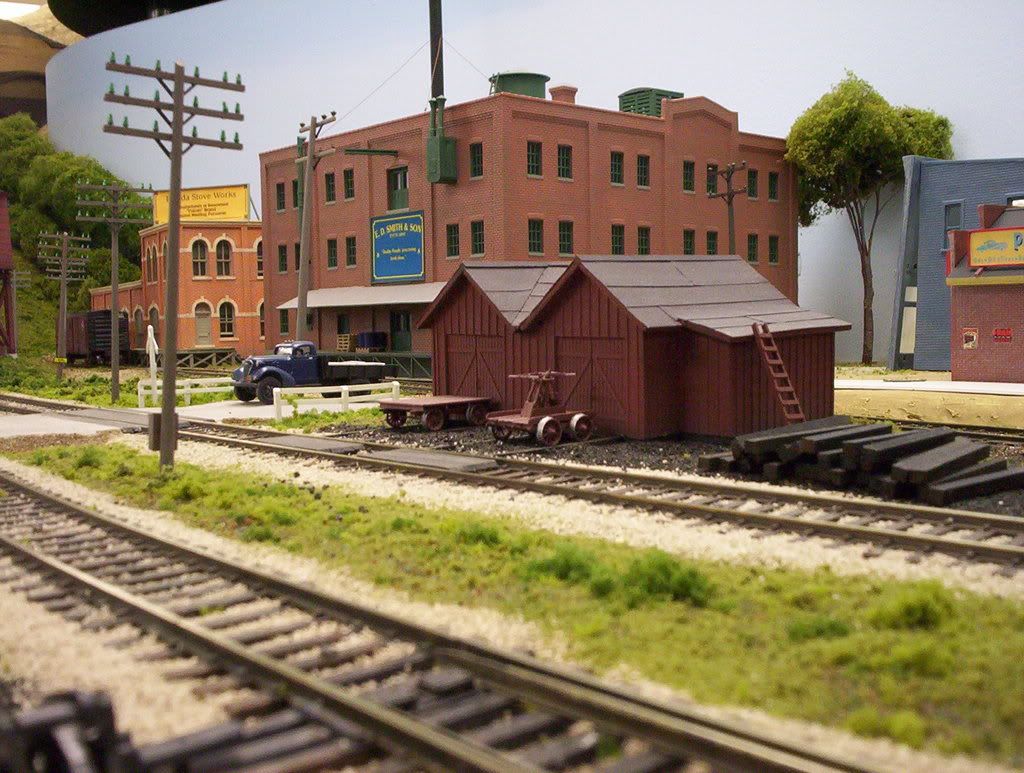
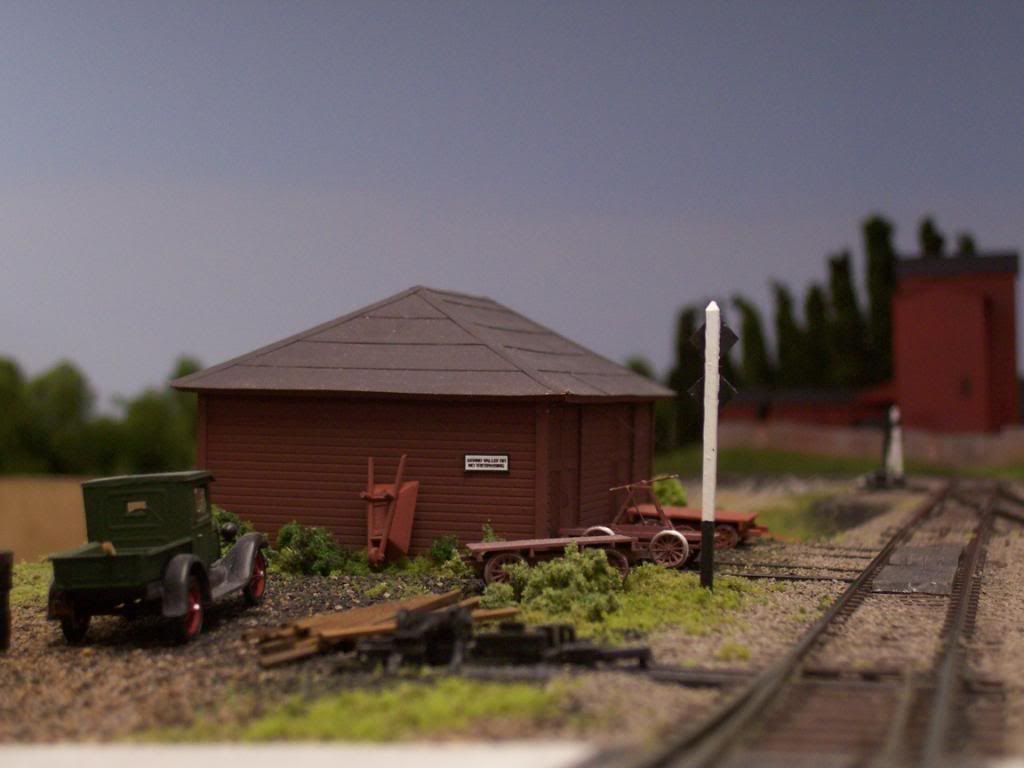
The first four are on the Erie Northshore’s line, while the fifth one belongs to the Grand Valley. Note the different roof styles between the two (now affiliated) roads. There’ll be more of the latter style on the upper level of the layout.
Wayne
I was still seeing and photographing speeders (and speeder sheds) into the 1980s, which was well into the second generation of high railer trucks and other vehicles.
What was interesting to me was the variety of ways different railroads, or different areas on the same railroad, would use to get the speeder into the shed. Between the rails there would be timbers, almost like a very short crossing, so the speeder could be turned 90 degrees as seen in the photos posted earlier. Sometimes going from the rails to the shed would be mere wood timbers to track gauge and the speeder would be rolled that way on the timbers into the shed. Sometimes you’d see actual rail but of an extremely small size, almost like amusement park train-ride rail. And sometimes you’d see fairly small L shaped steel structural shape embedded perhaps in asphalt, with the upward verticle part of the shape to track gauge.
Dave Nelson
A “speeder shed” is a section tool shed. “Tool shed” or “tool house” is more the proper term. “Speeder shed” is a nickname because the speeder is stored inside, but it doesn’t only store the speeder.
It’s a storage shed for the track workers tools and equipment, including the handcar or motorized “speeder” (depending on era) for getting around.
Some of the fancier section houses had a locker room with a table…I suspect that is where the gang foreman went over the day’s work sheet and knowing railroad men I highly suspect several hands of “quarter poker” was won or lost at that table.
I have a Fairmont MT-14 like Eds. Mine was built new in early 1980 for the Frisco just before the Burlington Northern takeover. It served on a BN bridge crew and has a reinforced roof so it could be swung across bridge gaps by a crane. Not sure what year it was retired. I bought it second hand in 2008.
Ray
